A break in the bad weather gave me a chance to test out my new Kowa 1.6x extenders with my Kowa TSN-884 spotting scope and TE-11WZ 25-60x eyepiece.
Optically the new TSN-EX16 1.6x extender is superb and with an official measurement from Kowa of less than 5% light loss it’s an incredible accessory under £300 for any Kowa 880/770 scope owner. Combining it with the TE-11WZ 25-60x eyepiece it now gave me a zoom range of 40-96x. Very impressive and perfect for long range subjects. Apart from the optics, I also very much like the engineering of this new adapter and the designers have made a great job with the aesthetics too, it seamlessly screws on to the scope body and is barely noticeable when connected – making this an incredibly powerful but still compact spotting scope when you consider the magnifications involved.
What has intrigued me further is that I heard the adapters could be ‘stacked’ to create even more power! I just had to try it…
Combining two of the extenders takes the 25-60x eyepiece up to a massive 153.6x magnification – and even when combined, the whole set-up is still surprisingly compact. Optically the performance is just outstanding at these extremes when combined with the Fluorite crystal 88mm objective lens of the Kowa 880 series scope.
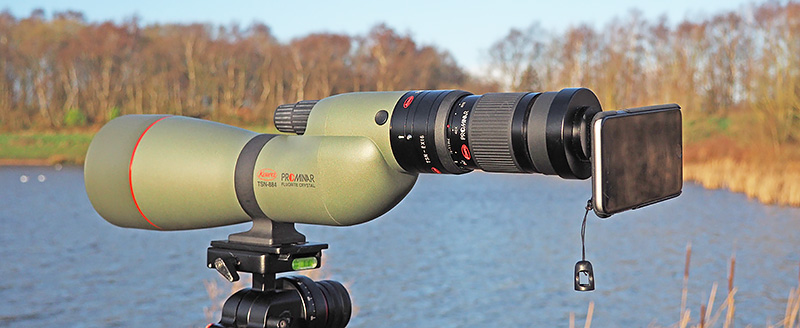
My Kowa 884 with two Kowa TSN-EX16 extenders ‘stacked’ with the Kowa TSN-IP6 iPhone 6 adapter ad iPhone 6S – Ultra compact Extreme digiscoping.
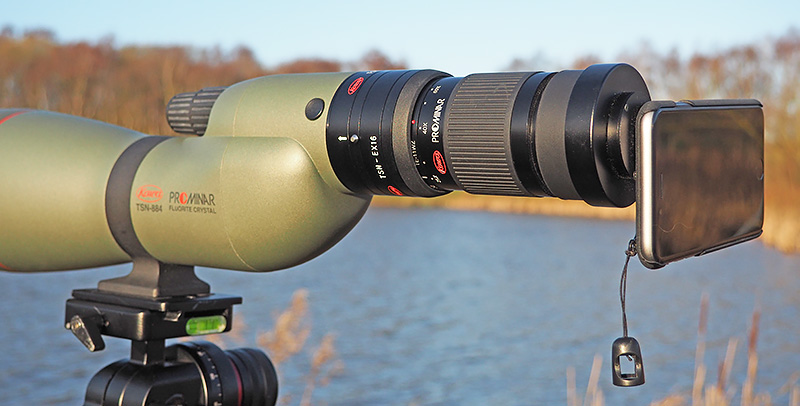 The Extenders compliment the body perfectly and add little additional weight or bulk – amazing considering I now have a 153.6x spotting scope.
The Extenders compliment the body perfectly and add little additional weight or bulk – amazing considering I now have a 153.6x spotting scope.
As a digiscoper – I wanted to see how these new adapters performed at these extreme focal lengths. I decided to test the scope and extenders using my iPhone 6S and Kowa iPhone adapter. Before evening attempting to take pictures with this kind of power, it’s important to remember that a good tripod and smooth panning video head is essential – any tiny fraction of movement is massively magnified – also if possible try to use a remote shutter to avoid camera shake – with the iPhone you can use the headphones volume control to take a shot – this greatly reduces the risk of camera shake which ultimately results in blurred images.
The key to successful digiscoping is to keep re-focussing – always check, fine tune and adjust your focus – the Kowa 880 scope has a fine tune focus wheel allowing for tiny adjustments. If you’re phonescoping – and your smart phone allows it – lock the focus and exposure on the phone allowing you to adjust manually to get the optimum shot – if not your phone focus will ‘hunt’ for focus whilst you adjust and wastes valuable time. Pressing and holding the screen for a second on the iPhone locks focus and exposure.
To give a true picture of what this set-up can do – I took a laser range finder with me to measure the distance of the subject and I took three shots – One with no extender with the eyepiece at 60x, one with one adapter and eyepiece at full zoom making 96x optical and finally a shot with 2x adapters and eyepiece at full zoom resulting in an optical zoom of 153.6x. I chose a static safety life-ring across the opposite side of the lake – the distance between scope and subject was 206 metres. The results, I have to say were stunning considering the focal lengths I was using – capturing incredible detail:
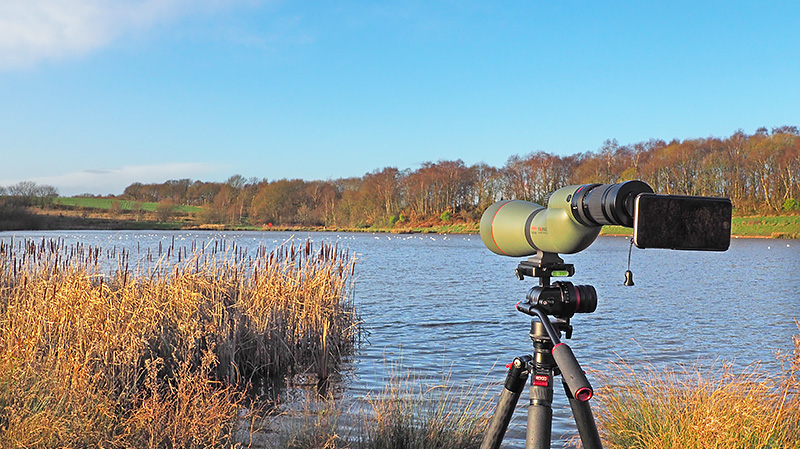
You can just see the red safety life ring on the opposite side of the bank at a distance of 206 metres
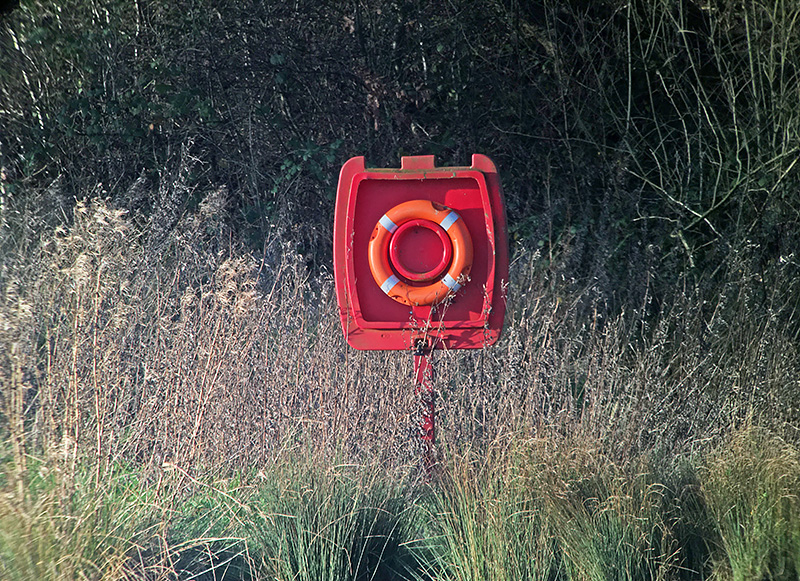 The Life ring at an optical zoom of 60x using just the TE-11WZ and no extender
The Life ring at an optical zoom of 60x using just the TE-11WZ and no extender
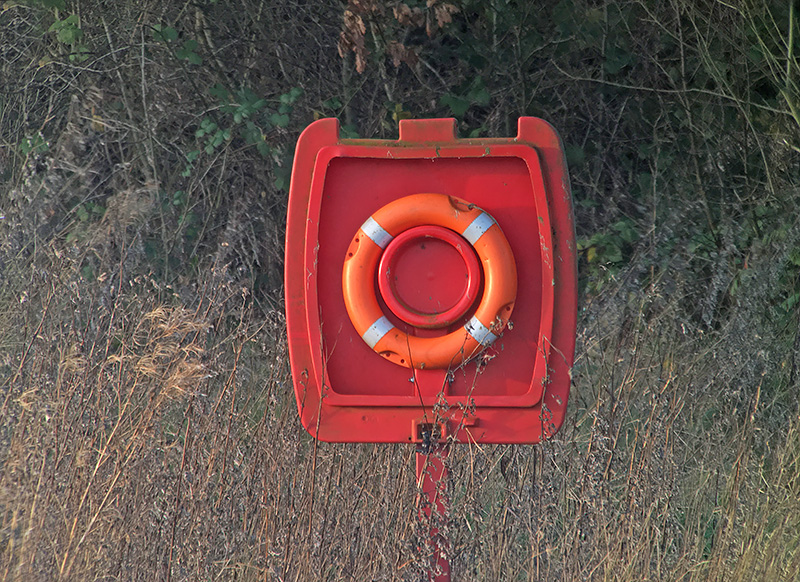 Adding one TSN-EX16 now produces an optical zoom of 96x – iPhone digiscoping performance is superb
Adding one TSN-EX16 now produces an optical zoom of 96x – iPhone digiscoping performance is superb
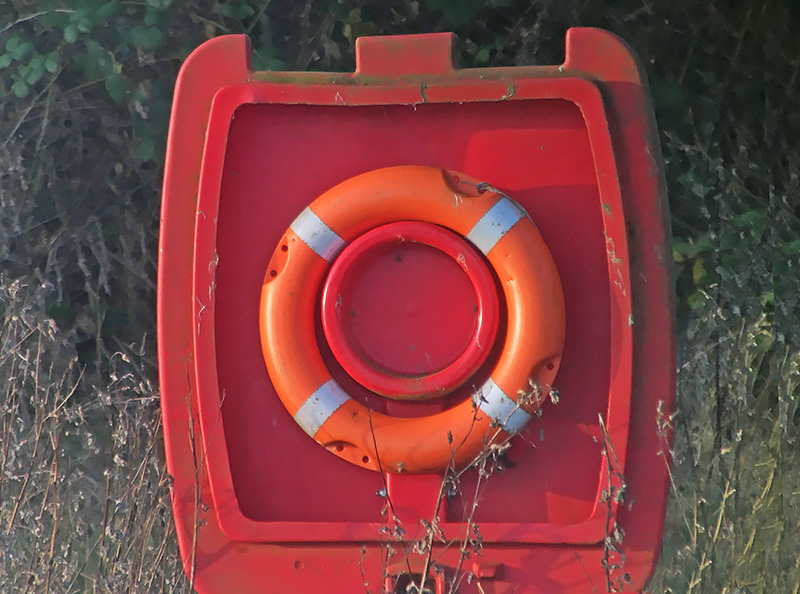 Adding a second Kowa TSN-EX16 combined with 60x on the eyepiece now produces a magnification of 153.6 to reveal amazing detail.
Adding a second Kowa TSN-EX16 combined with 60x on the eyepiece now produces a magnification of 153.6 to reveal amazing detail.
It’s hard to believe that this subject was over 200 metres away.
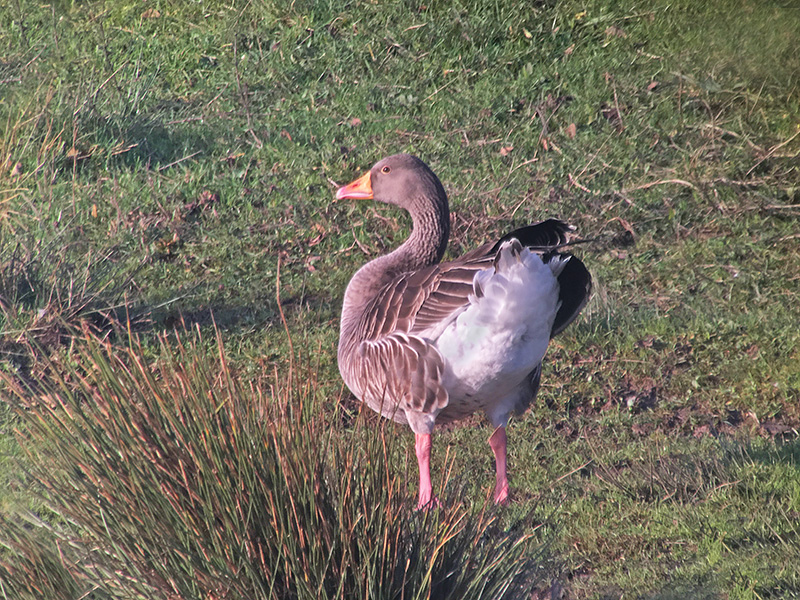
A Greylag goose at 153.6x magnification on the far bank measured by laser range finder at a distance of 149 metres. This level of detail previously impossible at such distance.
Digiscoping at these extremes requires some practice and will suit more static subjects such as perched or larger birds – just locating and focusing with such a shallow focus peak can be a challenge – but once perfected it opens up a whole new world of digiscoping.
